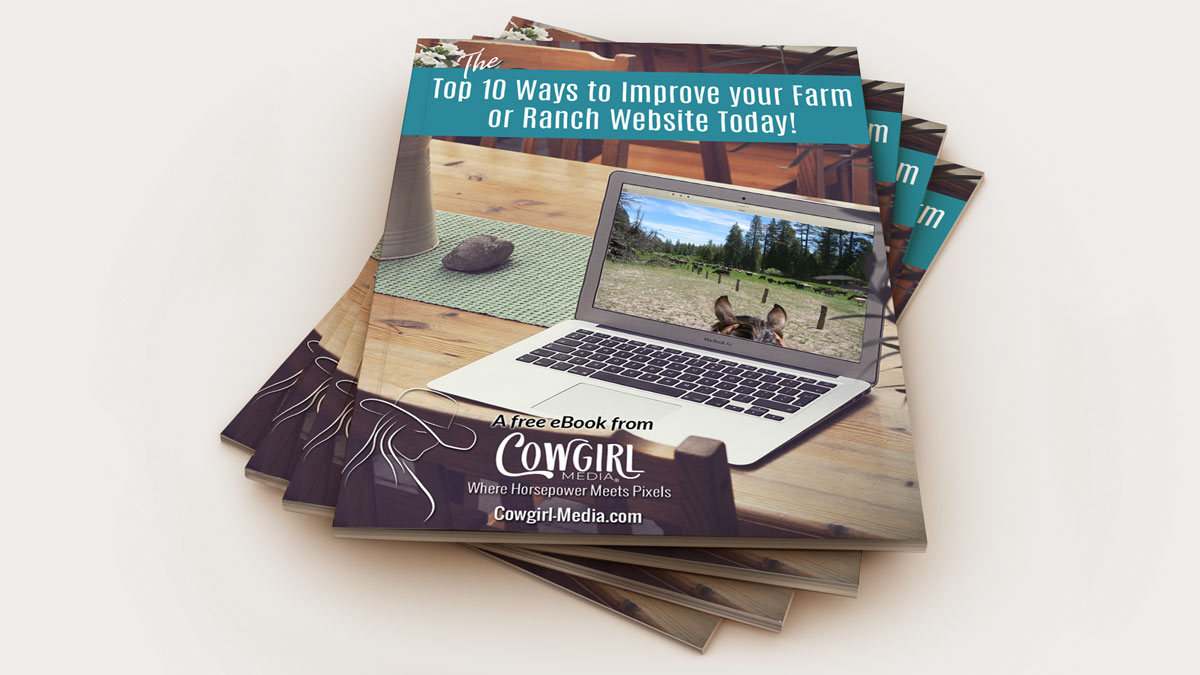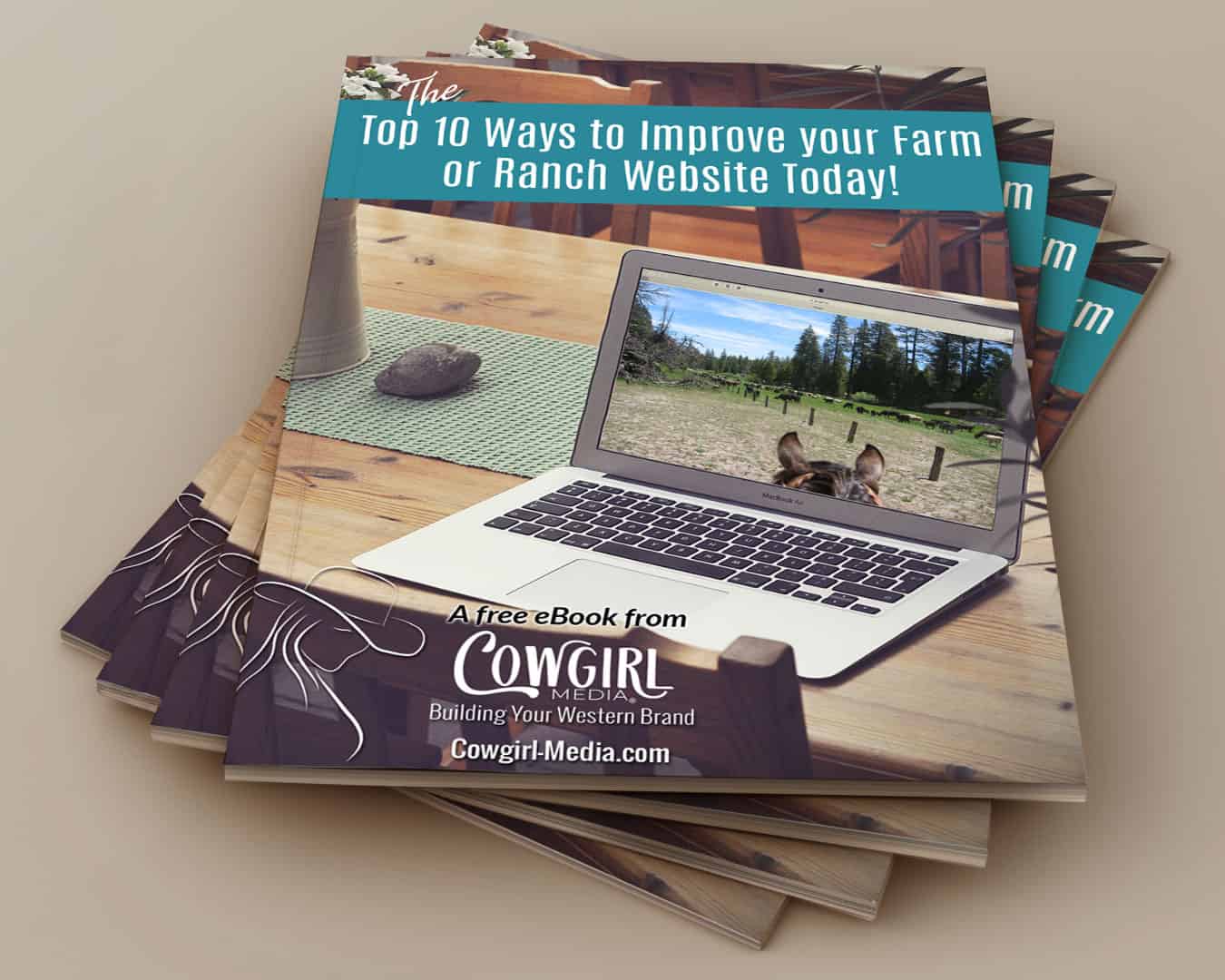Blog posts are just one piece of your overall content marketing strategy. Depending on the type of business you are in, these can include How-To articles, industry news, recent events at your ranch or farm, videos, etc. The topics are only as limited as your imagination.

What, exactly, is a blog?
Wikipedia defines a blog as “A blog (a truncation of the expression web log) is a discussion or informational site published on the internet and consisting of discrete entries (“posts”) typically displayed in reverse chronological order (the most recent post appears first).”
In a nutshell, it’s a journal, of sorts. Blogs began as people began writing their opinions and allowing others to comment on them, thereby starting a discussion. Blogs have transformed into much more than opinions over the years, and now are excellent sources of information on just about anything you can imagine. Commenting is still popular, and encouraged on most blogs. Blogging is about starting that conversation with people and getting that connection.
Why should I start a blog?
Excellent question, and there are many answers.- Search engines love blogs. Search engines love content, and blogging makes providing that content easy, so if you have a blog on your website, you’ll rank better in organic searches. The point of a blog is to post regularly, and that will keep Google and Bing crawling your website and indexing your pages and posts, which will help people to find you more easily. Stagnant websites do not perform and will fall in search rankings, so consistent new content is very important.
- Blogging will help to establish you as an expert in your field. People want to know that they can trust you for reliable, correct & relevant information. Posting regularly on your blog will help you get your message out to them that you know what you’re talking about and they can trust you to help them solve their problems. Building that connection with your audience and establishing that credibility is what will lead to more clients and more money in your pocket.
- Blogging is really good for your business. According to Social Media Today, small businesses with blogs generate 126% more leads than those without (see infographic, right). Additionally, Once you write 21-54 blog posts, blog traffic generation increases by up to 30%. (Source: TrafficGenerationCafe)
- You will drive more traffic to your website. Using social media to share your blog posts will send more people to your website to see what you’re all about. If you have things set up right once they get there, they’ll click around a bit and if they find the information useful, they might contact you. At the very least, they’ll have an impression of you and will remember you down the road. Make sure that first impression is a good one.
- You can earn money from your blog. There are numerous ways to earn money with your blog, including advertising and affiliate sales.
- Maintaining a blog will help you stay up to date with your industry and it keeps you focused on your content marketing strategy. If you’re committed to providing your readers with up-to-date information, you’ll often need to search for things to write about and share. You’ll be a leader in your field, not a follower, because you are actively seeking good information to share with people.
- Share your brand story! Blog posts don’t have to just be about business. Let people see the real you, let your personality and uniqueness shine through. It’s okay to be a little personal, as it will really help build a better connection with your readers, which is what you’re after.
- You can inspire others. By sharing some of your struggles with your business and how you overcame them, you not only help others solve their problems, but you can inspire them to do the same. In this age of “what’s in it for me?”, it’s so gratifying to help others succeed and watch them grow.
How can I get started?
If you already have a website, there are many platforms that already have built in blog functionality, such as WordPress. If you have a website but it’s not built with a CMS platform, and you’re self-hosted (meaning that you pay for website hosting through GoDaddy or Bluehost, for example), you can add a WordPress blog to your website easily. It may take some work to get the design to look consistent however, so keep this in mind. You don’t want people to think they left your site when they clicked on the Blog link. They need to know it’s still you that’s talking to them. If you don’t have a website yet, you can create a blog for free on WordPress.com, or Blogger, but these free services usually have a catch, typically in the form of banner ads and such that will be displaying on your site. These are often distracting and don’t usually put forth the professional image that a business wants, but it’s a good way to get started. Keep in mind however, that nothing is really ever free, and along will the flashing banner ads, you won’t have the same SEO juice as a self-hosted blog, which is critical for helping get traffic back to your blog. If you don’t have a website and you’re thinking of building one and adding a blog to it, now’s the time! Use a CMS (I prefer WordPress), as you’ll be able to keep the design integrity throughout your website and your blog, and you can manage both the site and the blog from one central location.Tips & tricks
- Invest in your own domain name that you’re proud to publish and get a self-hosted site. I realize that I mentioned the free blogging services above, but if you’re a business who’s struggling and you want to look professional, then BE professional. There is nothing more unprofessional than handing out your business card and the web site address at the bottom reads http://sites.google.com/site/YourBusinessName. Web hosting is not expensive these days (under $70 a year in most cases), so there really isn’t any excuse to use a free site.
- Encourage audience participation. Get people talking on your blog by asking them to leave comments, or by finishing your blog post with a question that they can answer in the comments. Every post needs a call to action, so there’s nothing wrong with asking for what you want! Just refrain from sales pitches and keep it real.
- Use images in your posts. Nothing is more boring than miles of endless text, so use images scattered throughout your posts, if you can. Your blog is informational, but it should also be somewhat entertaining. If you don’t have any photos of your own, or can’t take photos of what you need, there are many websites available where you can get both free and low cost images to use. Check out the Resources page to find some of these sites, or check out this helpful blog post.
- Don’t write novels. Keep your blog posts short and sweet. If they’re too lengthy, you’re apt to get that “deer in the headlights” look from your reader about half way through. A good rule of thumb is somewhere around 250 words, but that’s just a guideline.
- Write catchy titles. Try to lure your reader in with something interesting. Ask a question, use a popular cliche, make it funny, etc. And don’t forget to use your keywords for better SEO juice.
- Post regularly. Posting as often as you can goes without saying, but if you only post twice a year you might as well not post at all. Shoot for once a week, more if you can, for optimal results. Not only will you keep your reader more engaged, but the Google Gods will love you for it also, and you’ll be rewarded with better organic search rankings.
- KISS. Keep it Simple Silly. Avoid clutter on your blog. Better yet, make it an extension of your website so it uses the same design. White space is a good thing, and less can definitely be more. Too much clutter will make it more difficult for your reader to find the actual post. If you’re using Adsense, keep the ads limited to a specific area, and don’t scatter them in between paragraphs.
- Be social. Share your posts on all your social media pages, such as Twitter, Facebook, Google +, Instagram, etc. It’s pretty easy these days, as most blogging platforms have built in publicizing capability so with one click you can share to all of them. Also, don’t forget to add sharing links and/or buttons to your blog posts, so that your readers can share your posts on their own social media profiles. This will do a lot to drive traffic back to your blog, which is one of your primary goals.
- Set up an RSS feed. All blogs have a “feed” which is a digital listing of your posts. You can make this available to people who might want to subscribe to your blog and receive a notification in their email box every time you post. You can set up a feed through Feedburner (www.feedburner.com), and then link that feed to an RSS Icon that you place on your blog with your other social media icons.
- Keep an eye on your analytics. You can set up a free Google Analytics account and track your visitors and their behavior. Where are they coming from? How long are they staying on your site? What time of day are they visiting? What country are they in? What language do they speak? What type of device (desktop or mobile) are they using to view your blog? This information will give you much insight into your visitor so you can make sure you’re giving them the information they want.
- Proof read and spell check. Most blogging platforms these days have automatic spell checking in place, so be sure to use this. Proof read your posts also, to make sure that the context flows and will make sense to your reader.
- Repurpose your content. Believe it or not, blog posts are not done with once you’ve clicked the publish button. Many of these can be rewritten, turned into video or combined together to create additional content for you to use and repost. What if you combined several of your blog posts into a short ebook? Write an intro and a conclusion, design a cover and offer it as a free give away to encourage people to sign up to your mailing list. Maybe you did a short how-to post that you can now turn into a video and post on YouTube as well as your blog. Consider these ideas and use them when you’re short on time, or you just can’t come up with something new to write about.
- Need content ideas? There are a hundreds of places online to get ideas from, but you can start with this post, 50 Creative Blog Post Ideas to Inspire You. Also, check out the Content Marketing section of the Resources page for a couple of ideas as well. As time goes on you’ll be inspired by things around you and you’ll just naturally come up with more ideas, so be sure to jot them down as they come to you so you can refer back to your list when you’re stuck for ideas.






